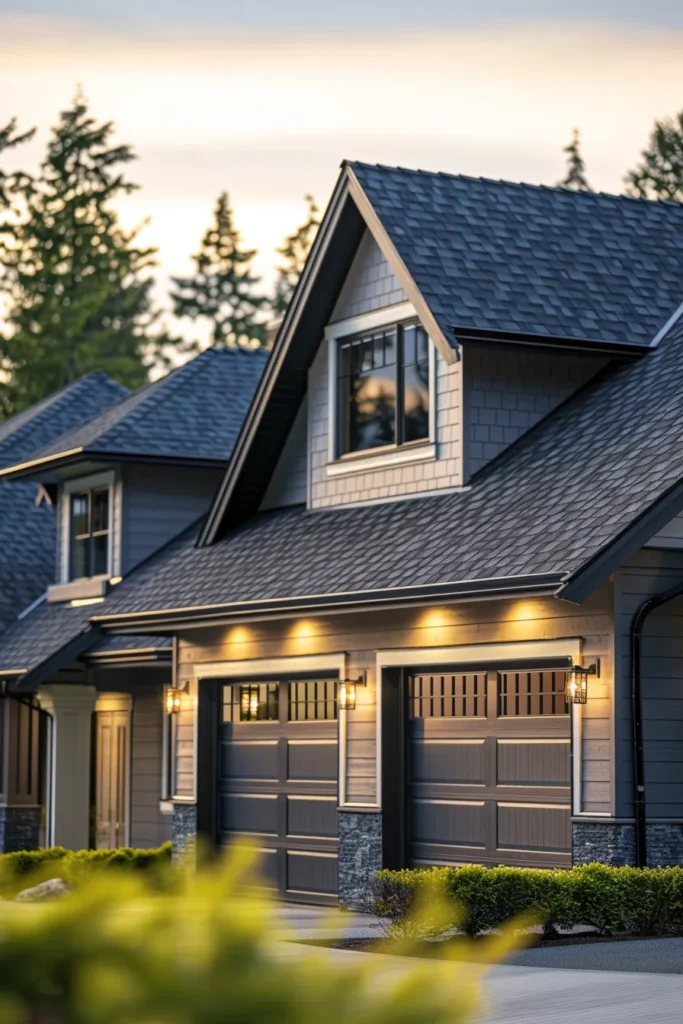Understanding Average Roof Repair Costs for HomeownersRoof Repair Costs: A Breakdown for Homeowners in Your Area
Are you concerned about how much a roof repair might cost? Understanding average roof repair costs can be tricky, especially with various factors influencing prices. This article will break down key elements affecting repair expenses, typical price ranges for common repairs, and how roof type impacts pricing. By reading this content, homeowners will gain clarity on what to expect, helping them budget effectively and avoid unexpected expenses. Engaging with this guide will empower readers to make informed decisions about their roof repairs, ensuring their homes remain safe and secure.
Essential Takeaways on Roof Repair Costs for Homeowners
- Assessing roof damage helps estimate repair costs and determine necessary material choices
- Local labor rates and project complexity significantly influence overall roofing expenses
- Understanding permit requirements ensures compliance and can prevent costly delays in roofing projects
- Comparing multiple estimates aids in identifying the best value for repairs from contractors
- Hidden structural damage can lead to unforeseen repair costs if not addressed promptly
Key Factors Determining Roof Repair Expenses in Your Locality

Assessing the extent of roof damage plays a critical role in estimating repair costs. Factors such as material choices significantly impact the budget, while local labor rates for roofing professionals can vary widely. Additionally, roofaccessibility and structural complexity contribute to expenses, along with any necessary permits and associated fees in the area. Each of these elements is essential for homeowners to understand when planning for roofing repairs.
Assessing the Extent of Roof Damage
Assessing the extent of roof damage is crucial for homeowners in New York City to understand potential repair costs. Water damage, for instance, can lead to more extensive issues and higher prices if not addressed promptly. Homeowners should consider the type of roofing material, such as tile, as well as the impact of energy conservation methods that may influence overall repair expenses and long-term savings.
Material Choices Impacting Your Repair Budget
Material choices are fundamental in determining roof repair expenses. For instance, high-quality roofing materials, such as metal or tile, may prevent issues like corrosion and extend the roof‘s lifespan, but they often come at a higher initial cost. Homeowners should also consider the installation of essential components like flashing, as these factors can significantly affect long-term maintenance and overall renovation budgets.
- Understanding the types of materials available
- Evaluating the impact of corrosion on longevity
- Considering the role of flashing in roof integrity
- Analyzing costs related to different material options
- Consulting a roofing contractor for professional advice
Local Labor Rates for Roofing Professionals
Local labor rates for roofing professionals are a significant factor influencing the overall cost of roof repairs. In particular, homeowners need to consider the variety of services required, such as the installation of a metal roof or incorporating a skylight, which may demand specialized skills. Rates can fluctuate based on the demand for skilled roofers, the complexity of the repair work, and the competitive pricing strategies of York roofing companies in the area, making it essential for homeowners to obtain multiple quotes to ensure fair pricing.
RoofAccessibility and Structural Complexity
Roofaccessibility and structural complexity are crucial elements influencing repair expenses for homeowners. If roofs are difficult to access, either due to height or surrounding structures, it can require additional equipment and labor, which increases costs. Furthermore, complexities arising from features such as multiple roof planes or the use of materials like slate or roof shingles can also add to the project’s overall expenses, as they demand specialized skills and additional care to manage debris and ensure stability.
Permit Requirements and Associated Fees in Your Area
Understanding permit requirements and associated fees is vital for homeowners planning roof repairs. Depending on the jurisdiction, permits may be necessary for various roofing projects, especially if energy efficiency upgrades or structural changes are involved. For instance, individuals residing in specific zip codes may encounter different regulations when addressing hail damage, which can affect the timeline and cost of repairs. Homeowners should consult local building authorities or resources like Angi to ensure compliance with all applicable requirements, ultimately aiding in smoother project execution and avoiding delays.
Understanding the factors that influence roof repair costs is just the first step. Next, let’s look at the typical price ranges for common roof repairs in your area and see what options are available.
Typical Price Ranges for Common Roof Repairs Locally

Homeowners should be aware of the typical price ranges associated with common roof repairs. Replacing damaged or missing shingles, fixing leaks and water damage, and repairing or replacing roofflashing are critical repairs that can affect overall roofingexpense. Additionally, addressing gutter damage connected to roof issues and understanding the average costs for minor versus major roof restorations are essential for effective home improvement planning.
Specifics about costs for materials like concrete or steel, along with flat roof replacement considerations, will provide a comprehensive overview, aiding homeowners in budgeting for necessary repairs.
Replacing Damaged or Missing Shingles
Replacing damaged or missing shingles is a fundamental part of roof maintenance that homeowners should prioritize. Commonly, costs range significantly depending on the type of shingles and the extent of the damage—typically being calculated on a square foot basis. This process often includes essential waterproofing techniques to prevent future roofleak repair needs, particularly after storm damage, ensuring the longevity of the roof structure and protecting the home’s soffit.
Fixing Leaks and Water Damage Costs
Fixing leaks and addressing water damage is a pivotal aspect of maintaining a home’s roof. Typically, costs for these repairs can vary based on the type of materials involved, such as copperflashing or fiberglass membranes, which may be necessary for effective waterproofing. Homeowners should be aware that wear and tear from heat and environmental factors can lead to more extensive damage if leaks are not promptly addressed, making it essential to consult a reputable roofing contractor for an accurate assessment and to ensure the longevity of the roof.
Repairing or Replacing RoofFlashing
Repairing or replacing roofflashing is an essential maintenance task for homeowners that helps prevent water damage around critical areas such as chimneys and vents. The costs associated with this type of repair can vary based on materials used, such as clay or metal, and may also include the fee for labor. Homeowners often utilize a home equity loan to finance significant repairs, ensuring their roof remains in good condition and protects their investment.
Addressing Gutter Damage Connected to Roof Issues
Addressing gutter damage connected to roof issues is essential for maintaining a home’s integrity. Often, problems arise when gutters become clogged or damaged, leading to water pooling and subsequent roof vent repair needs. Homeowners should consider their local climate and the potential impact on their gutters, as well as the importance of maintaining warranties for roofing materials like bitumen. Regular inspections and timely home repair can prevent costly complications down the line, ensuring that the roofing system functions effectively.
Average Costs for Minor Versus Major Roof Restorations
When evaluating the average costs for minor versus major roof restorations, homeowners should understand that minor repairs, such as fixing a few shingles or addressing leaks, typically range from $300 to $1,500. In contrast, major restorations that involve extensive work, such as replacing a significant portion of the roof or addressing structural issues in the attic, can accrue costs ranging from $5,000 to $15,000 or more. These price differences highlight the importance of conducting thorough inspections and consulting with professionals to determine the most appropriate course of action for each unique situation.
The numbers tell a story of their own in roof repairs. Next, the balance between material costs and labor charges reveals more about what drives those prices.
Material Costs Versus Labor Charges in Local Roof Repair

The costs associated with roof repair are influenced by several key factors, particularly the price of roofing materials and labor charges. Homeowners should understand how contractors break down material costs, calculate labor time, and how geographic differences impact material supply costs. Comparing quotes based on material and labor splits and recognizing the distinction between hourly rates and project-based pricing for labor can provide valuable insights into budgeting for repairs, ensuring longevity and protection from severe weather.
Breaking Down the Price of Roofing Materials
When evaluating roof repair costs, understanding the price of roofing materials is essential for homeowners. Gableroofs, commonly featuring asphalt shingle materials for their affordability and durability, play a significant role in overall expense. Specific factors, such as the use of dormers or additional structural elements, can further influence the material costs, necessitating a clear budget and a strategy to address repairs effectively.
Understanding How Contractors Calculate Labor Time
Contractors calculate labor time based on several factors, including the roof pitch and the complexity of the roofing services needed. For instance, when performing a metal roof repair on a steeply pitched roof, additional time may be necessary due to safety measures and equipment requirements mandated by building code. Homeowners should discuss these elements with their contractors, as understanding the labor component can help clarify the overall roof repairs cost and ensure informed budgeting for their roofing projects.
Comparing Quotes Based on Material and Labor Splits
When comparing quotes based on material and labor splits for roof repair, homeowners should focus on transparency in pricing. Understanding the complexity of the project can influence both material costs and labor charges significantly. By requesting detailed breakdowns during inspection, homeowners can better assess financing options for roof replacement and determine how the length of the repair process may affect overall expenses.
Geographic Differences in Material Supply Costs
Geographic differences in material supply costs can significantly impact roof repair expenses for homeowners. Areas with a higher cost of living may see increased prices for roofing materials, such as asphalt shingles or flat roof systems, due to elevated transportation expenses and demand for skilled labor. Furthermore, local regulations and proximity to suppliers can influence the overall expenses, making it essential for homeowners to consult with a qualified roofer to understand how these factors might affect their home’s repair needs and home insurance coverage related to roofing projects.
Hourly Rates Versus Project-Based Pricing for Labor
Homeowners should understand the differences between hourly rates and project-based pricing for roof repairs, as each can directly influence total repair costs. Hourly rates typically reflect the labor required for tasks such as replacing roof tiles or addressing wear on metalroofs, making it essential to estimate repair time accurately. In contrast, project-based pricing provides a fixed cost for the entirety of the job, which can often lead to savings, particularly for larger or more complex roofing projects.
Material costs and labor rates shape the roofing landscape, but they are just part of the picture. The type of roof and its pitch can dramatically influence repair expenses in your area, and that is worth exploring.
How Roof Type and Pitch Affect Repair Pricing Near You
Repair costs can vary significantly based on the type of roofing material used. Asphalt shingleroofs typically offer lower costs compared to metalroofs, which may require more specialized labor. Tile or slateroof restoration involves higher expenses due to the materials and complexity involved. Moreover, flat roofs present unique challenges that can influence overall costs, while steep roof pitches can necessitate price adjustments due to increased labor and safety measures. Understanding these factors is essential for homeowners planning repairs.
Repair Cost Differences for Asphalt ShingleRoofs
Asphalt shingleroofs are often favored for their affordability and ease of installation, making them a common choice among homeowners. Repair costs for asphalt shingles typically range from $3 to $6 per square foot, depending on the extent of damage and local labor rates. Proper maintenance and prompt repairs of missing or damaged shingles are essential, as neglecting these issues can lead to more significant problems, including leaks and structural damage, ultimately affecting the overall roofing expenses.
Pricing Considerations for Metal Roof Repairs
Metal roof repairs can vary significantly in cost due to several factors, including the type of metal used and the complexity of the installation. Homeowners often face higher expenses for repairs involving materials like aluminum or steel, which may require specialized skills and tools for proper handling. Additionally, the steepness of the roof pitch can add to labor costs, as more safety precautions are necessary during installation or repair processes, impacting the overall budget for metalroofing projects.
Expenses Associated With Tile or SlateRoof Restoration
Expenses associated with tile or slateroof restoration are generally higher compared to standard roofing materials due to the cost of the materials and the specialized labor required for installation and maintenance. Homeowners should anticipate spending significantly on both the initial restoration and ongoing upkeep, as these materials are heavier and demand meticulous handling. Engaging a professional with experience in tile or slateroofing is essential to ensure quality work, which ultimately protects property from leaks and enhances longevity.
Flat Roof Repair Cost Variables
Flat roof repair costs can vary significantly based on factors such as the type of materials used, the extent of damage, and the complexity of the repair process. For instance, roofing materials like EPDM rubber or PVC can have different price points that affect overall expenses. Moreover, any underlying issues such as trapped water or structural concerns will require additional attention, which can further impact the budget, making it essential for homeowners to consult a qualified roofing contractor to get an accurate estimate and address any potential problems promptly.
Steep Roof Pitch Challenges and Price Adjustments
Steep roof pitches present unique challenges that directly affect repair costs for homeowners. The increased angle of these roofs often necessitates additional safety measures and specialized equipment during repairs, leading to higher labor costs. Furthermore, the complexity of working on pitched roofs can complicate the repair processes, which may require skilled professionals familiar with best practices, ultimately impacting the overall expense of roof repairs.
Even with clear estimates, surprises can arise during repairs. Awareness of these unexpected costs can save homeowners from shock when the bill comes due.
Unexpected Expenses That Can Increase Your Roof Repair Bill
Unforeseen expenses can lead to higher roof repair bills, impacting overall budgeting for homeowners. Hidden structural damage discovered during repairs may require additional funds, while costs from pest infestations can also add to the bill. Compliance with updated building codes may necessitate upgrades, and disposal fees for old roofing materials further contribute to expenses. Additionally, emergency service premiums for urgent repairs can escalate costs significantly, highlighting the importance of thorough planning.
Discovering Hidden Structural Damage Underneath
Uncovering hidden structural damage beneath the roof can lead to unexpected costs for homeowners during repair projects. Often, initial inspections may overlook underlying issues such as rot, mold, or damage caused by pests, which can escalate repair bills if not addressed promptly. Engaging a trusted roofing contractor for a thorough evaluation ensures that any hidden damage is identified and managed before it compromises the roof’s integrity, ultimately saving homeowners from larger expenses in the future.
Costs Related to Pest Infestations or Damage
Pest infestations can significantly increase roof repair costs, presenting homeowners with unexpected financial challenges. Damage caused by pests such as rodents or insects can compromise the roof‘s structure, leading to issues like weakened supports or compromised insulation, which may require extensive repairs. Homeowners should conduct regular inspections and consult with roofing professionals to identify and address potential pest problems early, thereby avoiding more substantial repair expenses down the line.
- Pest damage can weaken roof structure.
- Regular inspections help identify problems early.
- Early detection can prevent extensive repairs.
Upgrades Needed for Building Code Compliance
Upgrades required for building code compliance can significantly affect roof repair expenses for homeowners. Local regulations often necessitate that roofing work meets specific safety and energy efficiency standards, which may involve installing additional insulation or reinforcing structural elements. Homeowners should be prepared for potential costs associated with these upgrades, as failure to comply with building codes can lead to fines and further repair complications down the line:
- Building codes ensure safety and energy efficiency.
- Upgrades may include insulation and structural reinforcements.
- Non-compliance could result in fines and additional repairs.
Disposal Fees for Old Roofing Materials
Disposal fees for old roofing materials can significantly add to the overall costs of roof repairs. Homeowners may not initially consider these expenses, but many roofing contractors charge for the removal and disposal of outdated materials, such as shingles or tiles, particularly if they are working with specific recycling or waste management services. Understanding these potential costs ahead of time allows homeowners to budget effectively, ensuring that they are prepared for all aspects of the roofing project, including environmental considerations and compliance with local disposal regulations.
Emergency Service Premiums for Urgent Repairs
Emergency service premiums can significantly impact roof repair costs for homeowners facing urgent situations, such as severe leaks or storm damage. When immediate action is required, many contractors charge higher rates due to the urgency and potential for additional risk during repairs. Homeowners should be aware that while these higher costs are often unavoidable, prompt attention can help prevent further damage and reduce overall expenses in the long run.
- Emergency repairs typically incur higher costs due to urgency.
- Contractors may charge more to account for increased risks.
- Addressing issues quickly can prevent further damage and additional expenses.
Unexpected expenses can weigh heavy on the mind. Knowing how to obtain accurate roof repair estimates can help lighten the load and guide you through the process.
Obtaining Accurate Roof Repair Estimates in Your Area
Homeowners seeking accurate roof repair estimates must begin by finding reputable local roofing contractors. Providing detailed information about the roof‘s condition allows for precise quotes. Effectively comparing multiple estimates ensures homeowners can identify the best value. Key questions for potential roofing companies, along with careful review of the repair contract, are essential for informed decision-making. Each of these topics will guide homeowners in this important process.
Finding Reputable Local Roofing Contractors
Finding reputable local roofing contractors is essential for homeowners seeking accurate roof repair estimates. Homeowners should start by researching online reviews and ratings to identify trustworthy roofing companies in their area. Additionally, consulting with friends or family members who have recently completed roofing projects can provide valuable recommendations and insights into local contractors’ reliability and quality of work.
- Research online reviews and ratings.
- Consult friends or family for recommendations.
- Check contractors’ licenses and insurance coverage.
- Request multiple estimates for comparison.
What Information to Provide for a Precise Quote
Homeowners seeking precise roof repair estimates should prepare detailed information about their roofing needs. This includes specifics about the type of roofing material, the extent of visible damage, and any previous repair work done. Sharing details such as the roof‘s age, current leaks, or structural complications can significantly aid contractors in providing accurate quotes:
- Type of roofing material (asphalt, metal, tile, etc.)
- Extent and nature of visible damage
- Previous roofing work and repairs
- Roof age and condition
- Presence of leaks or structural concerns
Comparing Multiple Estimates Effectively
When comparing multiple estimates for roof repairs, homeowners should focus on the details provided within each quote. This includes assessing the scope of work, materials proposed, and labor costs outlined by contractors in the estimates. By understanding these components, homeowners can identify discrepancies that may indicate variations in quality or service, allowing them to choose the most suitable roofing professional for their needs.
Questions to Ask Potential Roofing Companies
When homeowners are securing roof repair estimates, asking the right questions can make a considerable difference. They should inquire about the contractor’s licensing and insurance, which safeguards against potential liabilities related to the project. Additionally, it’s beneficial to discuss warranties for materials and craftsmanship, as these can affect long-term repair costs and ensure the roof maintains integrity over time.
Reading the Fine Print in Your Repair Contract
Reading the fine print in a roof repair contract is essential for homeowners to avoid unexpected costs and misunderstandings. This section typically outlines the scope of work, payment terms, and warranty details, which are crucial for ensuring the project meets expectations. Homeowners should pay close attention to any clauses regarding additional charges, materials specifications, and timelines, as these elements can greatly influence overall repair expenses.
Conclusion
Understanding average roof repair costs is essential for homeowners to effectively manage their budgets and make informed decisions. By considering factors such as material choices, local labor rates, and the extent of roof damage, homeowners can anticipate expenses and avoid unexpected financial burdens. Engaging with reputable roofing professionals for accurate estimates further empowers homeowners to ensure quality repairs and maintain the longevity of their roofs. Ultimately, being well-informed about repair costs not only protects a homeowner’s investment but also enhances the overall safety and integrity of their property.



